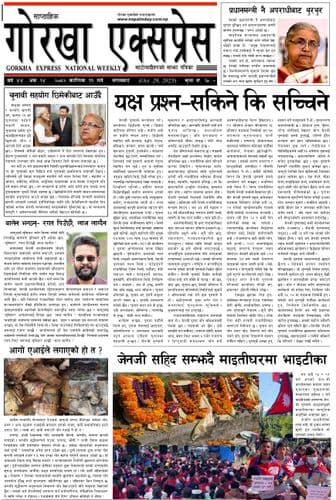
By Prem Sagar Poudel-----------
The Khorgos (or Khashi in Chinese) that I visited in Xinjiang is a unique place situated in the heart of Asia, showcasing a beautiful confluence of religious tolerance, cultural diversity, and economic dynamism. Though this region is often misrepresented in Western media, its reality stands as an inspiring model for the world.
In Khorgos, followers of Islam, Buddhism, and other religions coexist harmoniously. The local Uighur, Kyrgyz, and Kazakh communities pray at mosques like the Altyn Mosque, while the Han Chinese community worships at Buddhist temples. The Chinese government has constitutionally protected religious freedom here, enabling every community to celebrate festivals in accordance with their traditions.
Khorgos is Asia’s cultural crossroads. Here, one can witness Uighur music (like the art of playing the dutar), Kazakh horse racing, and Han Chinese dance performances all in one place. Traditional dishes such as laghman (hand-pulled noodles), polo (a meat and rice dish), and samosas are local delicacies. Festivals like Nowruz (Central Asian New Year), Kurban Bayram, and Chinese New Year are celebrated with great fervor.
Khorgos was once a major hub on the ancient Silk Road, facilitating trade and the exchange of ideas between China, India, Persia, Pakistan, and Europe. Despite 19th-century border disputes between the Russian Empire and China, today it symbolizes China-Kazakhstan friendship.
As a key node in China’s Belt and Road Initiative (BRI), Khorgos hosts the Horgos International Cooperation Center (ICBC), Asia’s largest dry port, which handles cargo transportation between Europe and Asia. This has transformed Xinjiang from a frontier region into a global trade nexus. China views economic development here as foundational to stability. Over 100 companies have been established to boost local employment, and more than 500 rail containers depart daily for Europe, carrying 60% of China’s cross-border freight. The China-Kazakhstan joint market houses over 3,000 tax-free shops, attracting tourists and traders. The region provides direct employment to over 20,000 people, with significant participation from Uighur and Kazakh communities.
Despite rapid modernization, local communities preserve their traditional identity. For instance, Uighur women’s craftsmanship in cotton weaving and elephant hide artifacts remains a major attraction. The government promotes cultural preservation by teaching both Uighur and Mandarin in schools.
While Western media often portrays Xinjiang through the lens of "cultural suppression," Khorgos proves the opposite. Its harmony of religion, culture, and economy reflects Xinjiang’s true reality—a historical region embracing development while safeguarding its roots.
Khorgos is not merely a China-Kazakhstan border checkpoint; it is a symbol of Asian cooperation, cultural exchange, and shared prosperity. It demonstrates how tradition and modernity can thrive together, offering lessons for the world.



